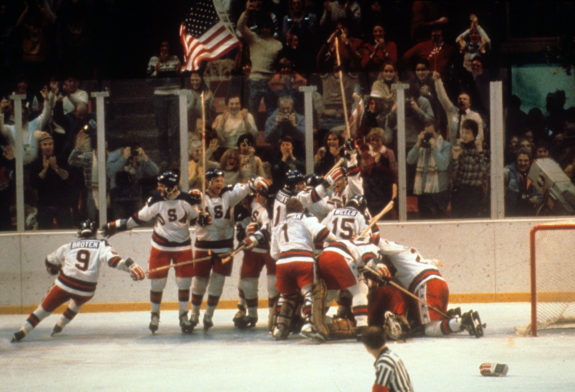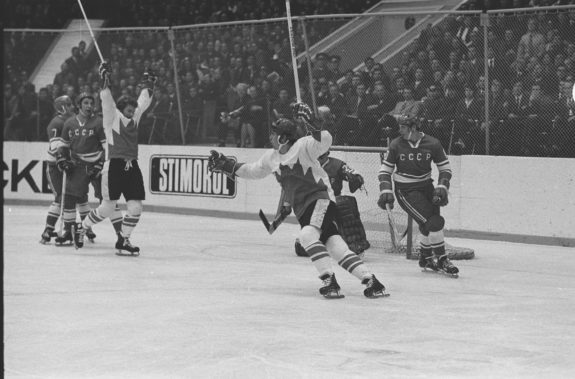Hockey: A Global History will bring hockey fans something they’ve long been missing: a well-researched, all-encompassing text on the history of hockey. Authors Stephen Hardy and Andrew C. Holman, both university-level educators, combine decades of research to bring the latest installment in the “Sport and Society” series from the University of Illinois Press.
Hardy and Holman take readers back to the earliest remnants of what could be even hinted at as hockey in an effort to find the sport’s origins. An often-debated topic, the text explores every potential trail for hockey’s roots and investigates all legitimates claims of hockey’s birthplace. It takes readers from Canada and the United States to Europe and Asia to find answers, which provides great insight even if a concrete truth isn’t found.
The authors delve into hockey from seemingly every possible angle, discussing individual people who were key to the sport’s founding and growth, important places, and the events that proved vital to allowing hockey to step out as a regional sport and onto the international stage. In the book, you’ll learn about how hockey grew from the shinny ponds of northern climates to the major revenue generator it is today, one that is spread across the globe.
You’ll learn that at its key moments, hockey has been at the crossroads of world issues, serving as an icon of East-West relations during the Cold War, exemplified by the 1972 Summit Series, the 1980 Lake Placid Olympics, and the Detroit Red Wings’ Russian Five that left Russia after the Soviet Union’s collapse to have massive success in the NHL.

Finally, you’ll learn that hockey is so much more than a hobby, a game, and a sport. It’s also not just a business represented by professional leagues throughout the world whose revenues are growing from television contracts. Instead, you’ll come to understand that hockey is a representation of culture and, oftentimes, the convergence of cultures, both on and off the ice.
For decades, the Canadian playing style reigned supreme and other nations – Sweden, Czechoslovakia, and the Soviet Union – were looked down upon for how they played. That is until those nations began winning and their approaches to the game began transferring to North America.
The modern game is no different. No longer is hockey a near-exclusively white, middle to upper class sport as it was in the late 19th and early-to-mid 20th centuries. In the NHL alone, the demographics of rosters have changed from nearly all Canadians and Americans to more Europeans playing in the league than ever before. Compared to other sports, hockey has done well to break down barriers of race, gender, religion, sexuality, and disability. That’s what hockey represents.
It’s played in nations east and west, north and south. In cultures where waters are frozen over half the year and in ones that never see natural ice. Yet it’s the same game. That’s the story of hockey, and it’s a great one that continues to be told. It’s come a long way, but still has further to go. I believe that’s the message Hardy and Holman wanted to convey in the book, and they succeeded.
The text has something for everyone. If you are a fan of hockey, you’re in luck. Stories about the game’s biggest names grace the pages. Learning just how important the 1972 Summit Series was to both the Soviets and Canadians and what Paul Henderson’s infamous goal meant will have fans flipping through the pages. Reading about Bobby Orr’s impact on the NHL’s salary structure will have fans struggling to put the book down.

Meanwhile, if you’re interested in history, the pages are filled with it. To find a sports history book that has been so meticulously researched and is backed by hundreds of primary sources is revelatory. You can feel confident that when Hardy and Holman discuss a topic or an event, that it’s backed with hours of research. It’s a rare find in the genre of sports history.
Hockey: A Global History is a major hit. It’s billed as “THE monumental end-to-end history of the sport,” a large undertaking, yet it succeeds. The text takes readers from the sport’s beginning through the 2012-13 NHL Lockout and discuss nearly every topic imaginable. If you’re looking for a book that focuses solely on the NHL and its teams and players and you want a stats and biased opinions, this isn’t for you. However, if you want to delve deep into the sport you love and have an interest in being educated and immersing yourself in a great story, it is for you and you’ll enjoy it.
Hockey: A Global History will be available for purchase on Nov. 15, 2018 and can be found at the University of Illinois Press’s website as well as on Amazon. Special thanks to University of Illinois Press for providing me with an advance copy.